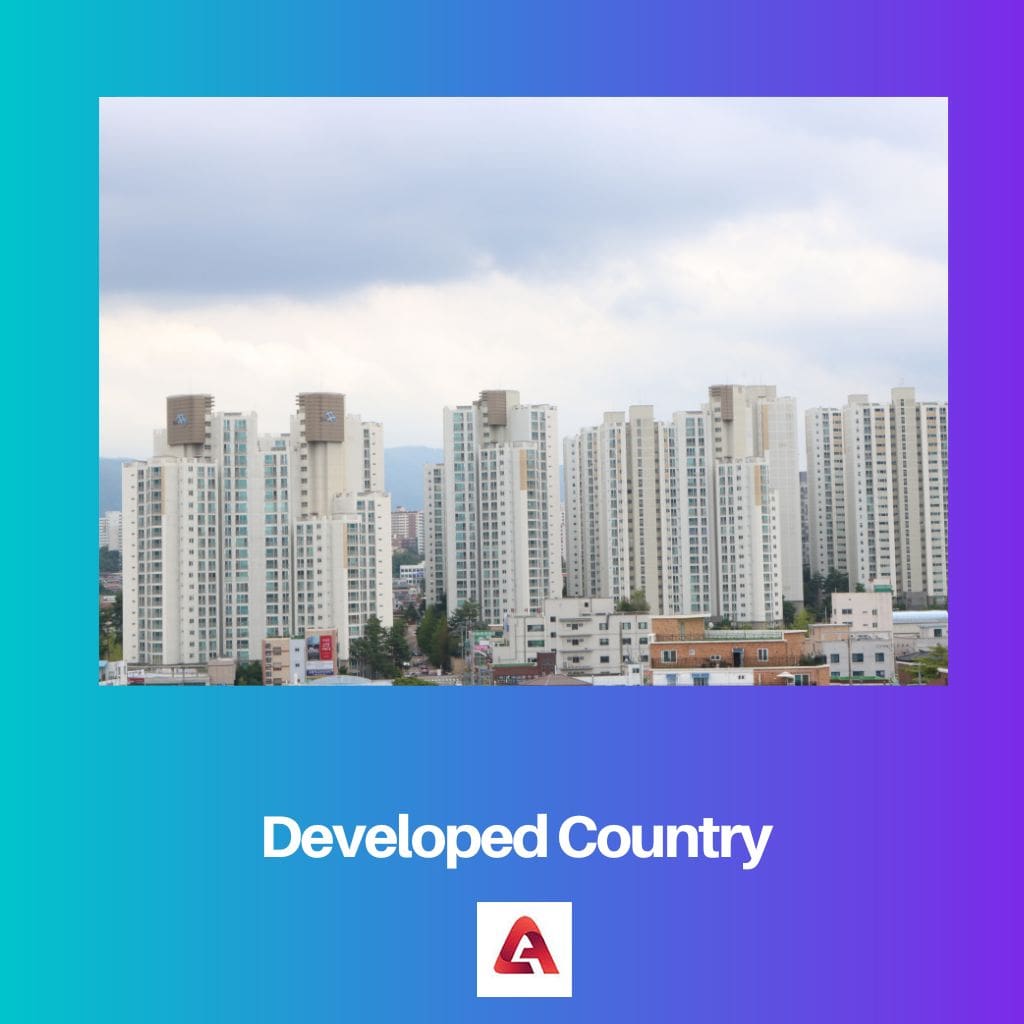Developed countries have high per capita income, a longer life expectancy rate, a higher standard of living and other facts which point towards a person’s higher quality of life. Developed countries are said to be economically advanced compared to other countries and also known by other names like First World Countries, Advanced Economies, Industrialized Nations etc. These countries have good infrastructure and a stable economy. Industrialization, development and most of their citizens have a high standard of living in these countries.
These developed countries have some things in common. For instance, they all are industrialized. It means that these nations are technologically advanced, and their economy is manufacturing-based. They have a free-market economy. Their market works on the law of demand and supply, i.e., the prices of goods and services are determined based on customers’ needs and the availability of those goods and services in the market.
Components like Democratic Political Institutions and lower corruption levels are essential to a developed country.
Key Takeaways
- A developed country is a sovereign state that has progressed past the stages of an emerging economy and is characterized by a high standard of living, a well-established infrastructure, and a stable political environment.
- Developed countries have advanced economies based on service sectors such as healthcare, education, and technology, with a highly skilled workforce.
- High levels of human development, low poverty, and low mortality rates characterize developed countries. They are members of international organizations such as the United Nations and the World Trade Organization.

Examples of Developed Countries
Here are some examples of developing countries.
- United States
- Japan
- Norway
- Switzerland
- Ireland
- Germany
- Australia
- Iceland
- Sweden
- Singapore
- The Netherlands
- Hong Kong, China
Characteristics of Developed Countries
1. High Per Capita Income
Each year developed countries have High Per Capita Income. This means people are earning enough income so that they can spend as well as invest or save. This boosts a country’s economic value. Thus, it results in a lower level of poverty.
2. Good Health Care
Developed countries ensure good health facilities for their citizen. They guarantee reliable and trained medical staff and hospital availability. This results in a low mortality rate and a high life expectancy rate for the population. Also, in developed countries, population development can be controlled wisely.
3. High Security
Compared to developing countries, developed countries provide better security. Because developed countries have sophisticated and advanced technology, the government must develop better weapon technology and security facilities.
4. Low Rate Of Unemployment
In Developed countries, all their citizens have an income source. Thus, there is a relatively lower rate of unemployment in these countries.
5. More Exports, Less Imports
Because of superior technology and human resource, developing countries perform higher exports than imports.
6. Advanced Technology and Science
The citizens of developed countries are well aware and have mastered the technology and science area. Such new gadgets like Industrial Pendant Lights are introduced in their market. Therefore, in their daily lives, they mostly use modern tools and advanced technology to facilitate their lives.


